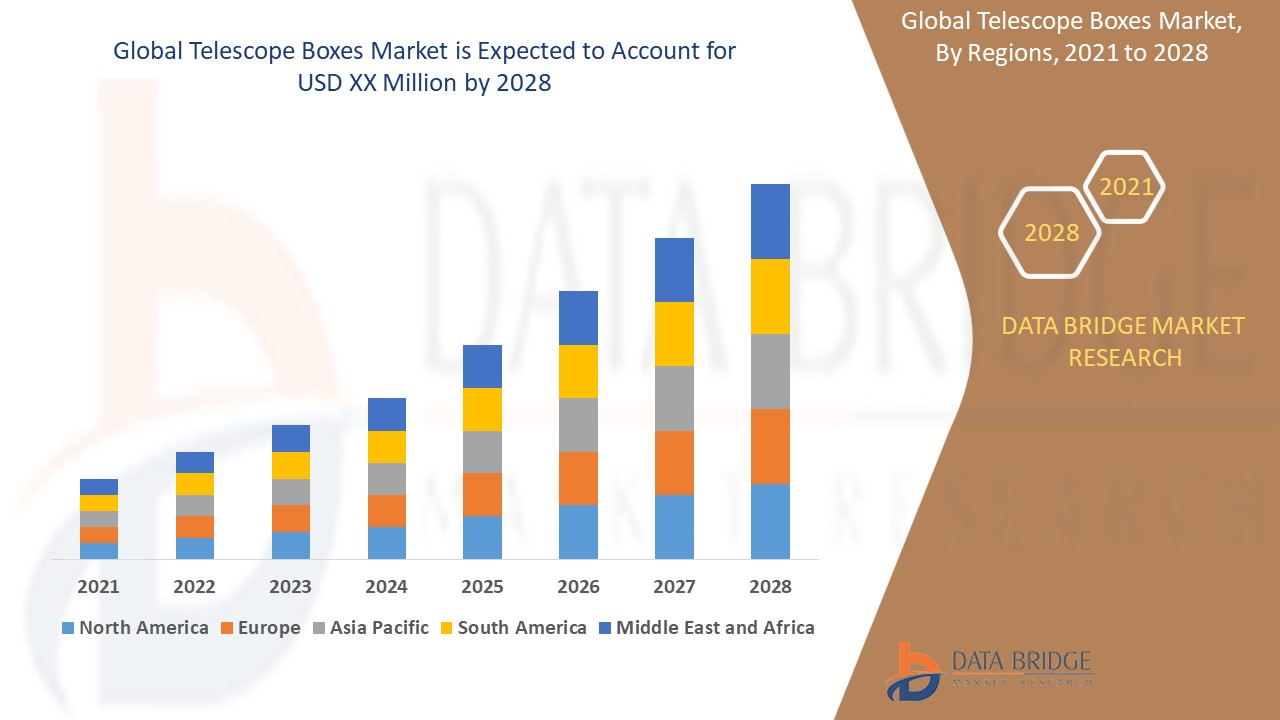Introduction
In the dynamic world of packaging, telescope boxes have emerged as a durable, versatile, and aesthetically appealing solution for various industries. Known for their two-piece design — a separate lid and base that fit over one another — telescope boxes offer enhanced protection, customization, and presentation advantages. These qualities have led to a steady rise in their adoption across sectors such as electronics, apparel, cosmetics, food, and e-commerce.
As global demand for sustainable, strong, and customizable packaging grows, the telescope boxes market is experiencing significant expansion. This article explores the current state of the telescope boxes market, key growth drivers, industry trends, challenges, and the forecast for the future.
What Are Telescope Boxes?
Telescope boxes are rigid boxes that consist of two parts: a top lid and a bottom base. They are categorized based on how much the lid overlaps the base, such as full telescope (lid covers the entire base), partial telescope (lid covers only a part), and shoulder boxes (which have a tray that creates a shoulder between lid and base).
These boxes are widely appreciated for:
-
High durability and strength
-
Premium appearance and feel
-
Protection during shipping and handling
-
Customization options for branding and design
Market Overview
The telescope boxes market has witnessed notable growth over the past decade. A combination of factors — including booming e-commerce, increasing awareness of premium packaging, and demand for sustainable alternatives — has accelerated its adoption.
According to industry estimates, the global telescope boxes market was valued at over USD 4 billion in 2023 and is projected to grow at a CAGR of around 5.8% between 2024 and 2030. Growth is expected to be particularly strong in emerging economies where e-commerce and retail sectors are flourishing.
Key Market Drivers
-
Rising E-commerce and Retail Sector
The global e-commerce boom has increased the need for protective, aesthetically pleasing, and efficient packaging. Telescope boxes are ideal for high-end goods, electronics, and gift items, which require both security and presentation.
-
Consumer Preference for Premium Packaging
As consumer preferences shift toward elegant and customized packaging, telescope boxes have become a preferred option for luxury brands. The tactile and visual appeal of these boxes enhances the unboxing experience.
-
Sustainability Trends
Telescope boxes, often made from recyclable paperboard or corrugated materials, align with global sustainability initiatives. Brands are opting for eco-friendly packaging to reduce their carbon footprint and appeal to environmentally conscious customers.
-
Customization and Branding
The ability to customize telescope boxes with various printing techniques, embossing, debossing, foil stamping, and UV coatings makes them suitable for brand promotion. Businesses use them as an extension of their brand identity.
End-Use Industries
Telescope boxes are used across multiple industries, including:
-
Apparel and Footwear: For luxury garments, accessories, and designer shoes.
-
Electronics: For gadgets, mobile phones, and accessories that require safe transit.
-
Cosmetics and Personal Care: For perfumes, beauty kits, and skincare products.
-
Food and Confectionery: For premium chocolates, gourmet items, and festive packaging.
-
Corporate Gifting: For hampers, awards, and promotional items.
Market Segmentation
-
By Type:
-
Full Telescope Boxes
-
Partial Telescope Boxes
-
Shoulder Boxes
-
-
By Material:
-
Paperboard
-
Corrugated Fiberboard
-
Kraft Paper
-
Recycled Paper
-
-
By Application:
-
Retail Packaging
-
Shipping & Logistics
-
Gift Packaging
-
-
By Region:
-
North America
-
Europe
-
Asia-Pacific
-
Latin America
-
Middle East & Africa
-
Recent Trends
-
Adoption of Eco-friendly Materials
Manufacturers are increasingly using biodegradable, recycled, and FSC-certified paper materials. Compostable coatings are also being introduced to replace plastic laminations.
-
Digital Printing and Smart Packaging
Brands are incorporating QR codes, augmented reality (AR), and NFC technology in telescope box designs to enhance user engagement and traceability.
-
Rise in Subscription Box Services
Subscription-based models in beauty, food, and lifestyle sectors prefer telescope boxes for their presentation quality and durability.
-
Minimalist and Sustainable Design
Modern consumers favor minimalistic designs with natural textures and earthy tones, reflecting environmental values and aesthetics.
Challenges in the Market
Despite strong growth, the telescope boxes market faces certain challenges:
-
Higher Production Cost
Telescope boxes are more expensive to manufacture compared to traditional folding cartons or mailers, due to their rigid structure and premium materials.
-
Competition from Alternative Packaging
While rigid boxes offer superior appeal, flexible packaging and foldable alternatives are often preferred for cost-saving and logistical efficiency.
-
Recycling Limitations with Laminated Boxes
Some finishes used for premium aesthetics (like gloss lamination) can reduce recyclability, which conflicts with the sustainability push.
Regional Insights
-
North America holds a significant share due to the strong presence of e-commerce giants, luxury brands, and consumer awareness.
-
Europe is driven by strict environmental regulations and increasing demand for recyclable packaging.
-
Asia-Pacific is the fastest-growing region, supported by booming online retail, industrialization, and evolving consumer preferences in countries like China and India.
Future Outlook
The telescope boxes market is poised for continuous growth over the next decade. As sustainability, branding, and product safety become central to packaging strategies, telescope boxes will increasingly find favor among businesses and consumers alike.
Key opportunities include:
-
Innovation in biodegradable materials and inks
-
Integration of smart features in luxury packaging
-
Expansion into new verticals like pharmaceuticals and electronics accessories
-
Development of collapsible telescope boxes to reduce shipping costs
Investments in automated manufacturing and efficient supply chains will also help offset the high costs associated with premium rigid packaging.
Conclusion
The telescope boxes market reflects the changing dynamics of consumer expectations, environmental responsibility, and retail innovation. As brands strive to offer more than just a product — an experience — packaging plays a crucial role. Telescope boxes, with their blend of strength, elegance, and customization potential, are well-positioned to meet this need. With continued innovation and a focus on sustainability, the market is set to thrive in the years to come.
Read More : https://www.databridgemarketresearch.com/reports/global-telescope-boxes-market


